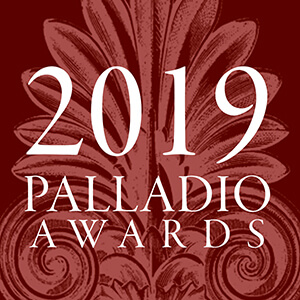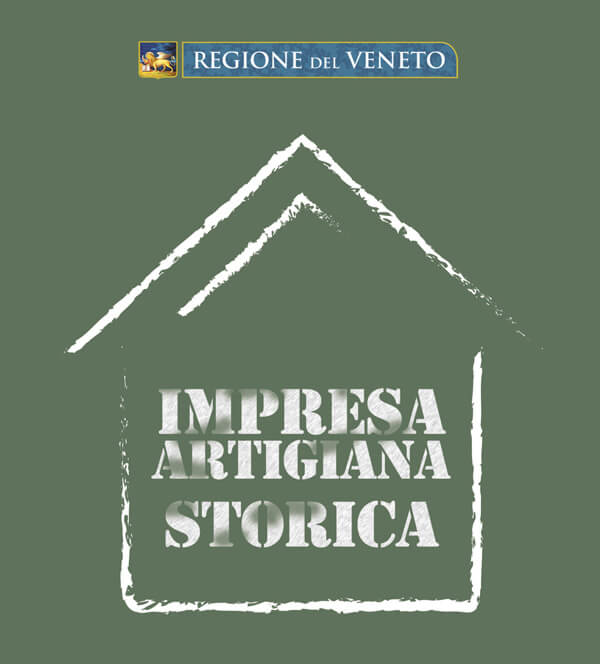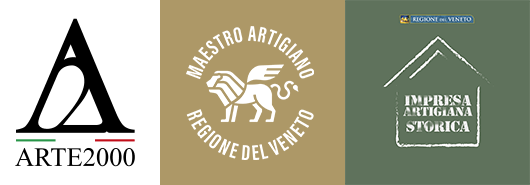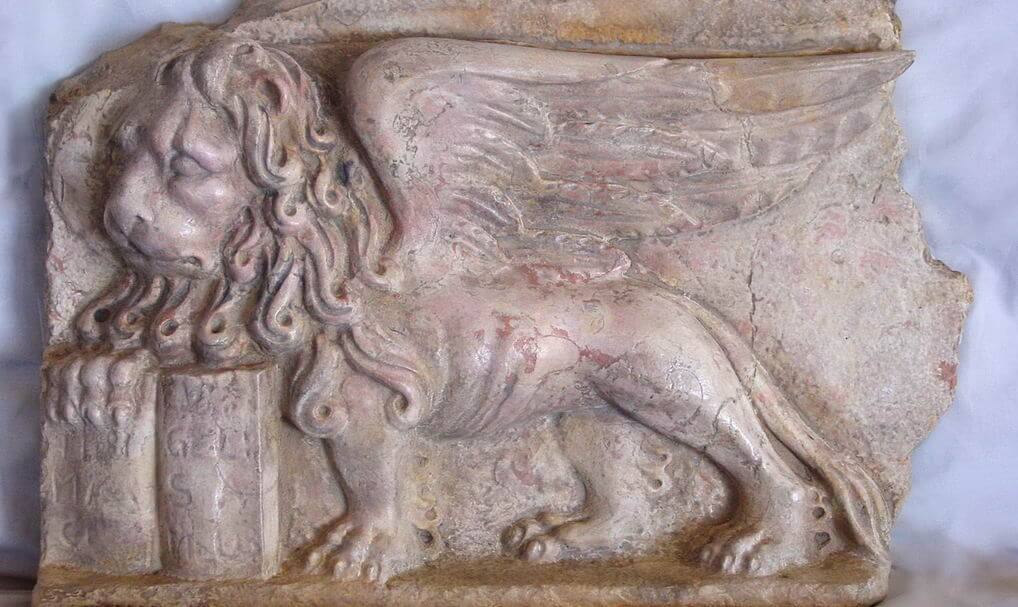
The traditional representations of Saint Mark’s lion
The Lion of Saint Mark, symbol of Venice and of the Serenissima Republic, is represented with different elements and with various poses also used in heraldry.
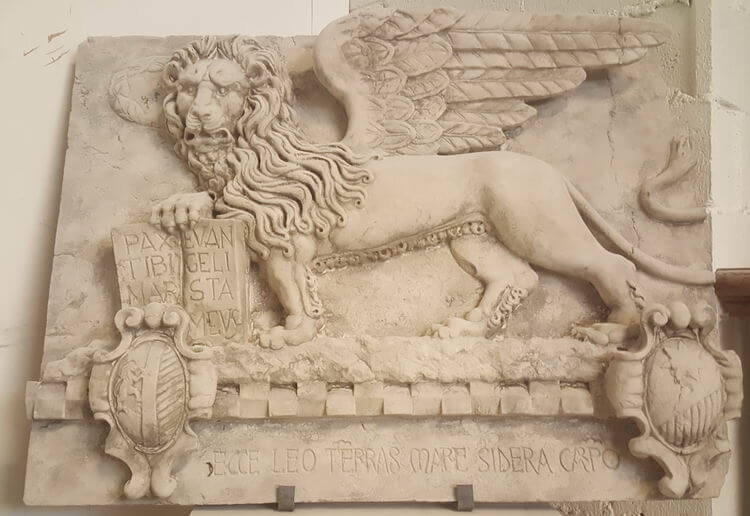
Arte 2000 work
Principal reproductions of Saint Mark’s lion
In “moléca” or “moèca”
The lion is crouched and frontally positioned with the wings explained like a fan assuming an aspect similar to the crab with the open claws. It is a version very used on small spaces, for the simplicity and the graphic compactness, above all on coins, seals, coats of arms and flattened bas-reliefs.
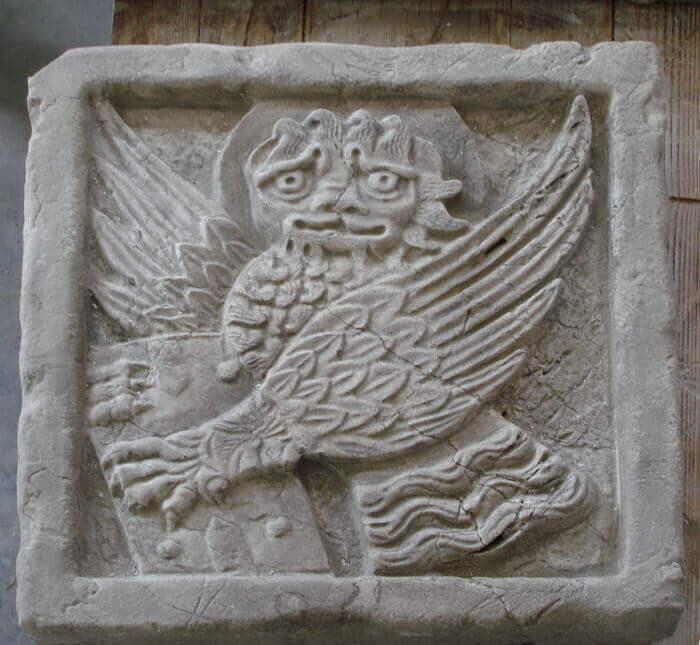
Arte 2000 work
Curiosity:
In the Venetian language, the word moléca pronounced mo’eca, is the name given to the small green crabs during the moulting phase: period of few hours in which the carapace is soft and tender before becoming hard.
According to the popular tradition, the book kept between the forelegs, remembers the adult crab that during the search of food, if it doesn’t succeed in finding it, turns the attention to its younger fellow creatures stopping them between the paws and attending the moulting phase when they are more tender and easy to be eaten.
The moeche are a typical dish of the Venetian culinary tradition.
In “soldo” or in “gazzetta”
The representation in moeca is also known as “in soldo” or “in gazzetta”, from the name of the coins coined from the Republic of Venice where the lion was represented in a squatting position, in magnificence, with the explained wings and the halo.
In profile
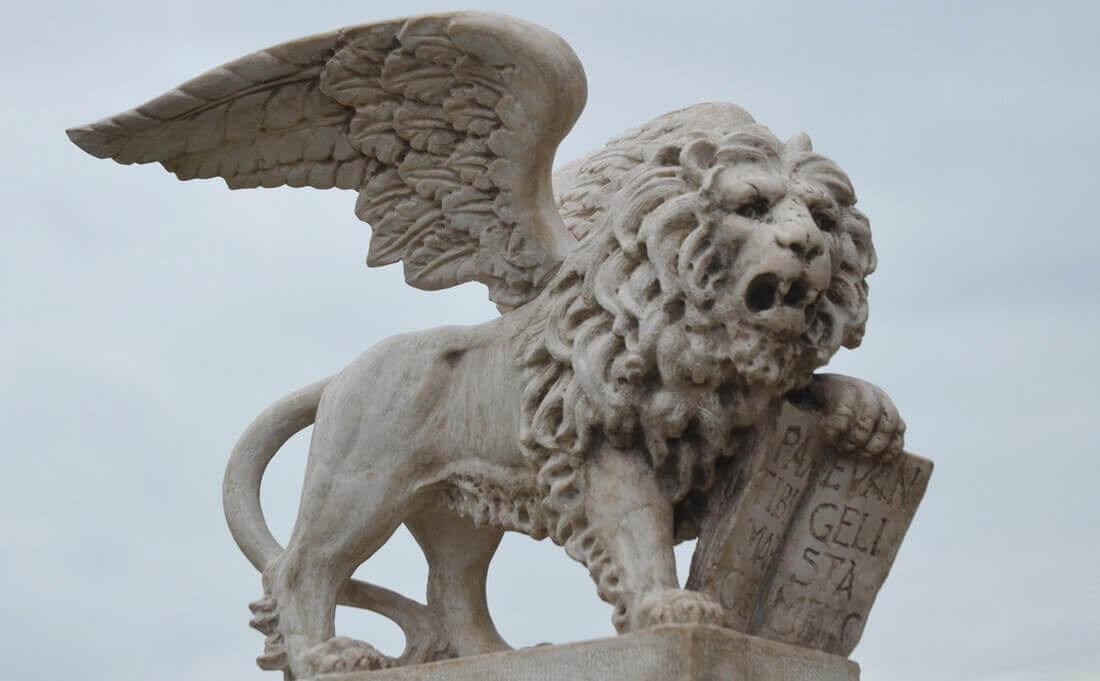
Arte 2000 work
The lion is in profile, standing on three paws with the right front one placed on the book or holding the sword.
Rampant
The lion is in profile standing on the hind paws and with the forelegs it holds the book and the sword.
Historical evolution of the iconography
The representation has followed the history of the Republic of Venice. At the beginning it was in moeca to indicate that it was a city born and emerged by the sea, to represent the bond with the water and to transmit the message of purity and liberty from the political interferences by the other territorial powers. In the mid-4th century, when Venice turned the attention to the hinterland, the lion was represented with the hind paws in the water and the forelegs on the dry land, near to a towered city, probably to symbolize the power on the sea and on the earth.
Elements that characterize the winged lion
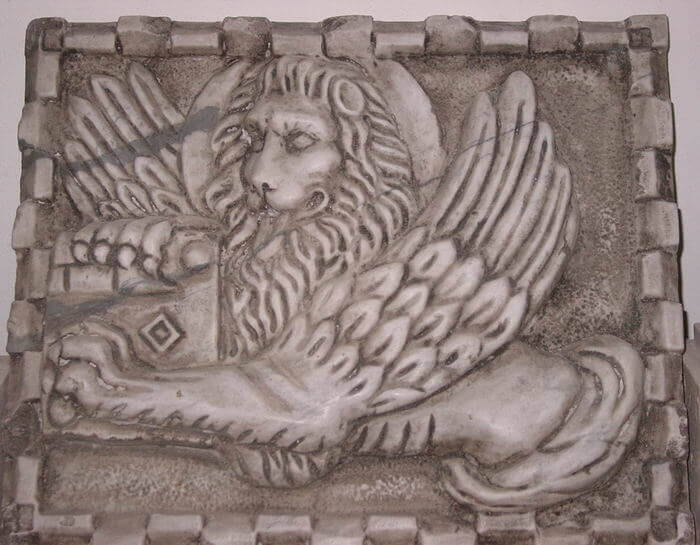
Arte 2000 work
In the Christian iconography, in the art of history and in the popular tradition, the lion and the various heraldic features represent the virtues of Venice:
– the lion, especially with the raised tail, represents the magnificence, the power, the strenght
– the wings identify the spiritual elevation toward God
– the halo is the symbol of piety and sanctity with which Mark apostle was honoured
– the book, sometimes associated to Gospel , is the symbol of wisdom and peace
– the sword, besides being the power of the Evangelist word, is the icon of equity and justice; in fact it is also used in the representation of the Justice goddess
Here we tell you the history of Saint Mark’s lion
Book and sword: result of legends and popular beliefs
The Serenissima didn’t codify any symbol and the interpretation is not supported by historical sources. The popular custom attributes the following meanings:
– lion with the open book indicated the supremacy of the State or that the town, where it was situated, had to pay the taxes.It was often associated to a period of peace
– lion with the closed book, sometimes with the paw or the sword above, represented the delegated supremacy and the public judiciaries. It was often associated to a period of war. In the border countries it indicated that the city was exempted by the payment of the taxes for war merits or in exchange for fidelity; an example is given by the lion of Valstagna
– the open book together with the grasped sword were also considered symbols of the public justice
The most famous and well-known representation remains that of the lion “in profile” with the open book and the famous sentence in Latin “Pax Tibi Marce, Evangelista meus” which is also the most classic and famous. Here the article. With these features we have created a personalized monumental work and we tell you the most relevant phases in the case-history.
You can see some sculpted products with the different artistic techniques: in the round, undercut, bas relief and high relief in the Portfolio/Gallery/Lions.
This article contains general information. For questions and curiosities leave a comment below. If you wish to be contacted, please fill out the form.
